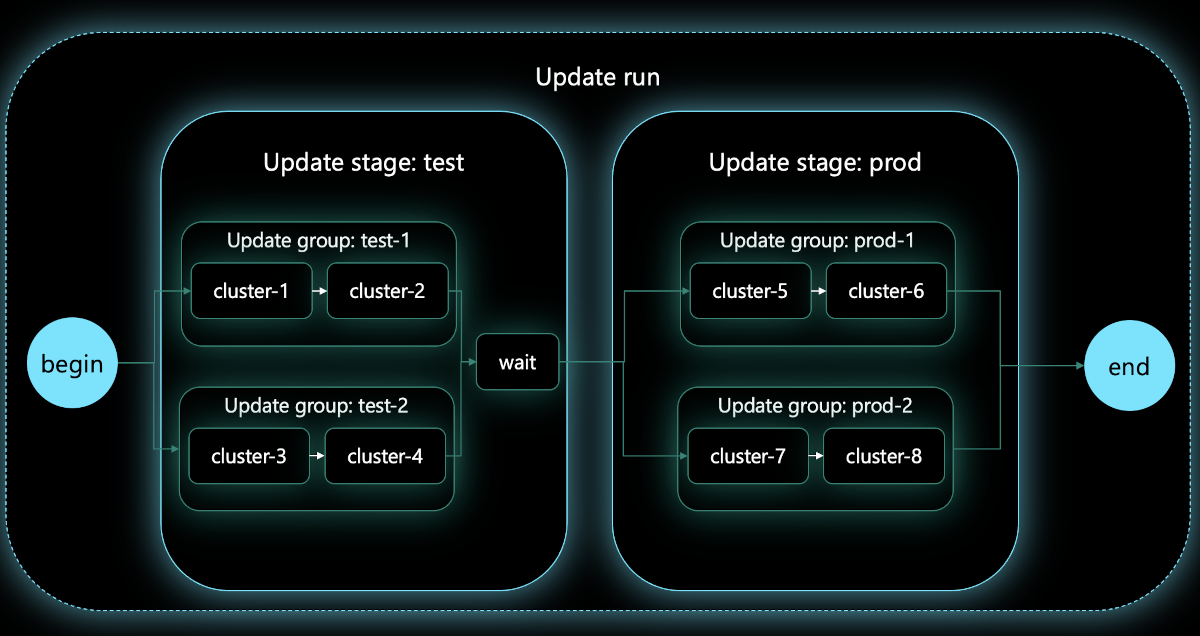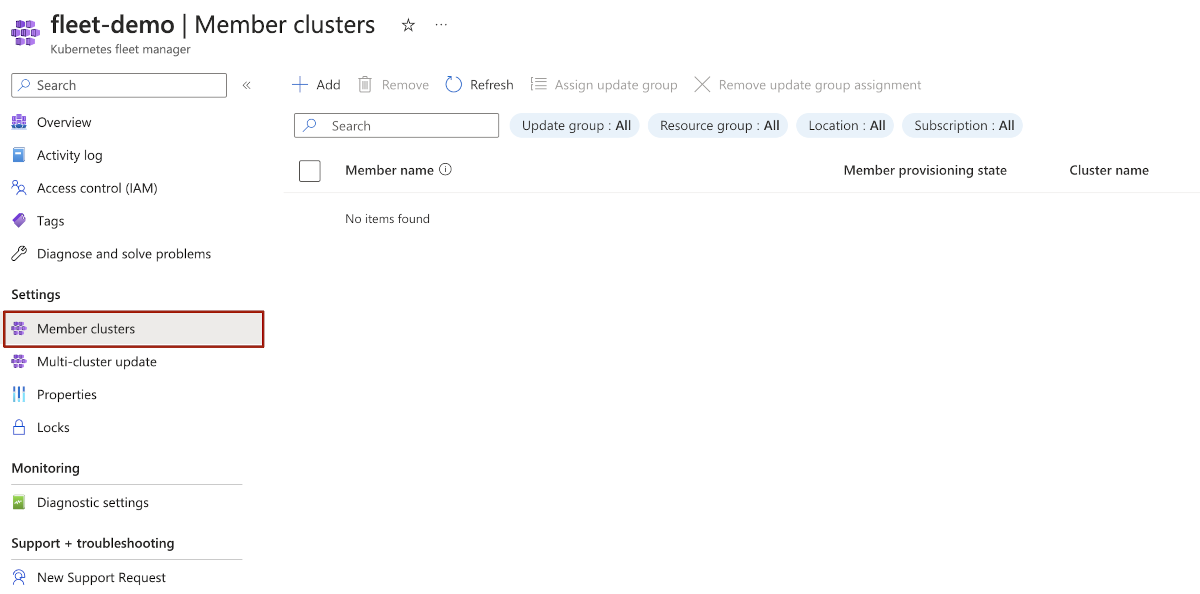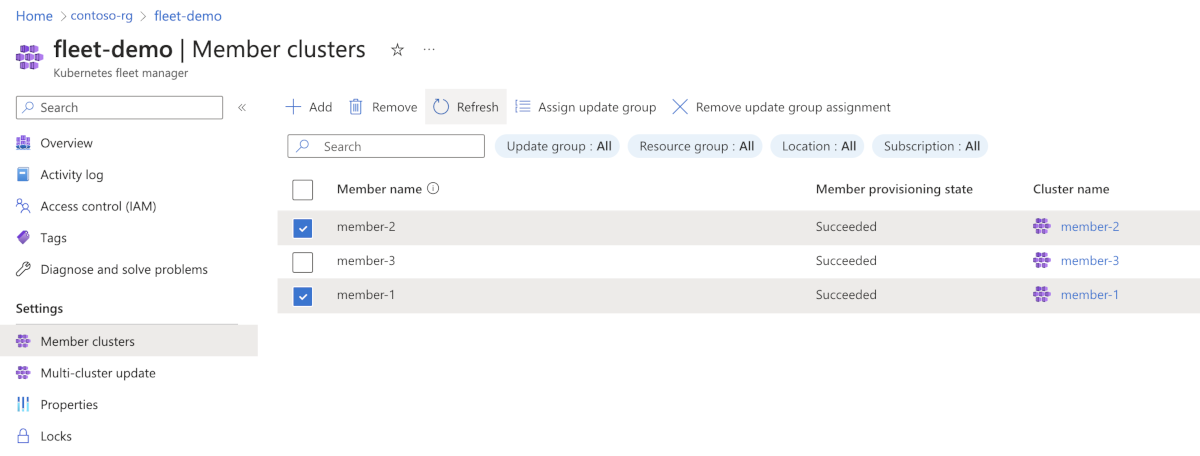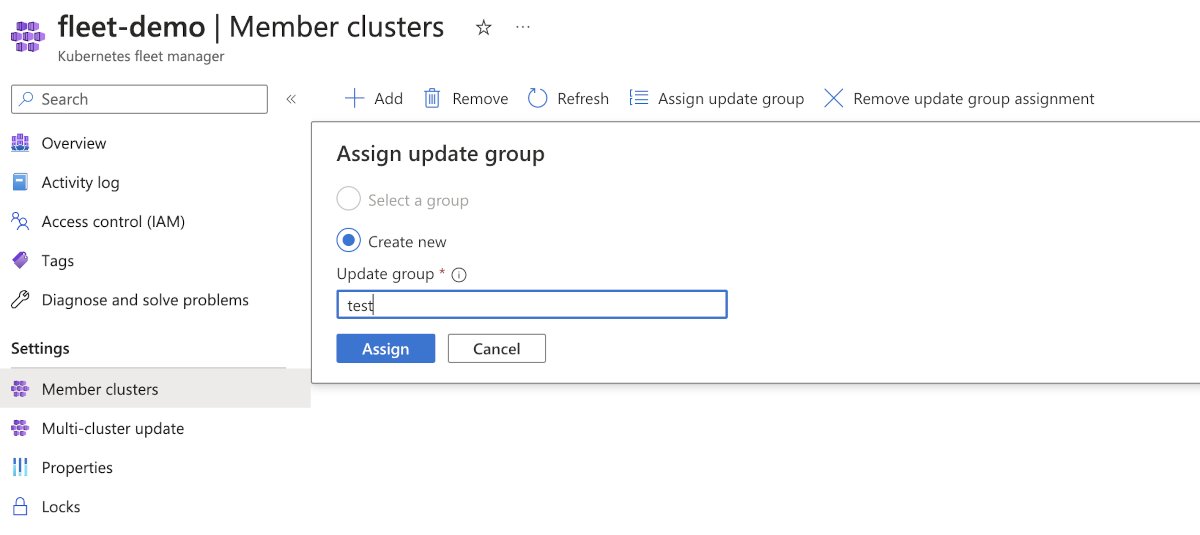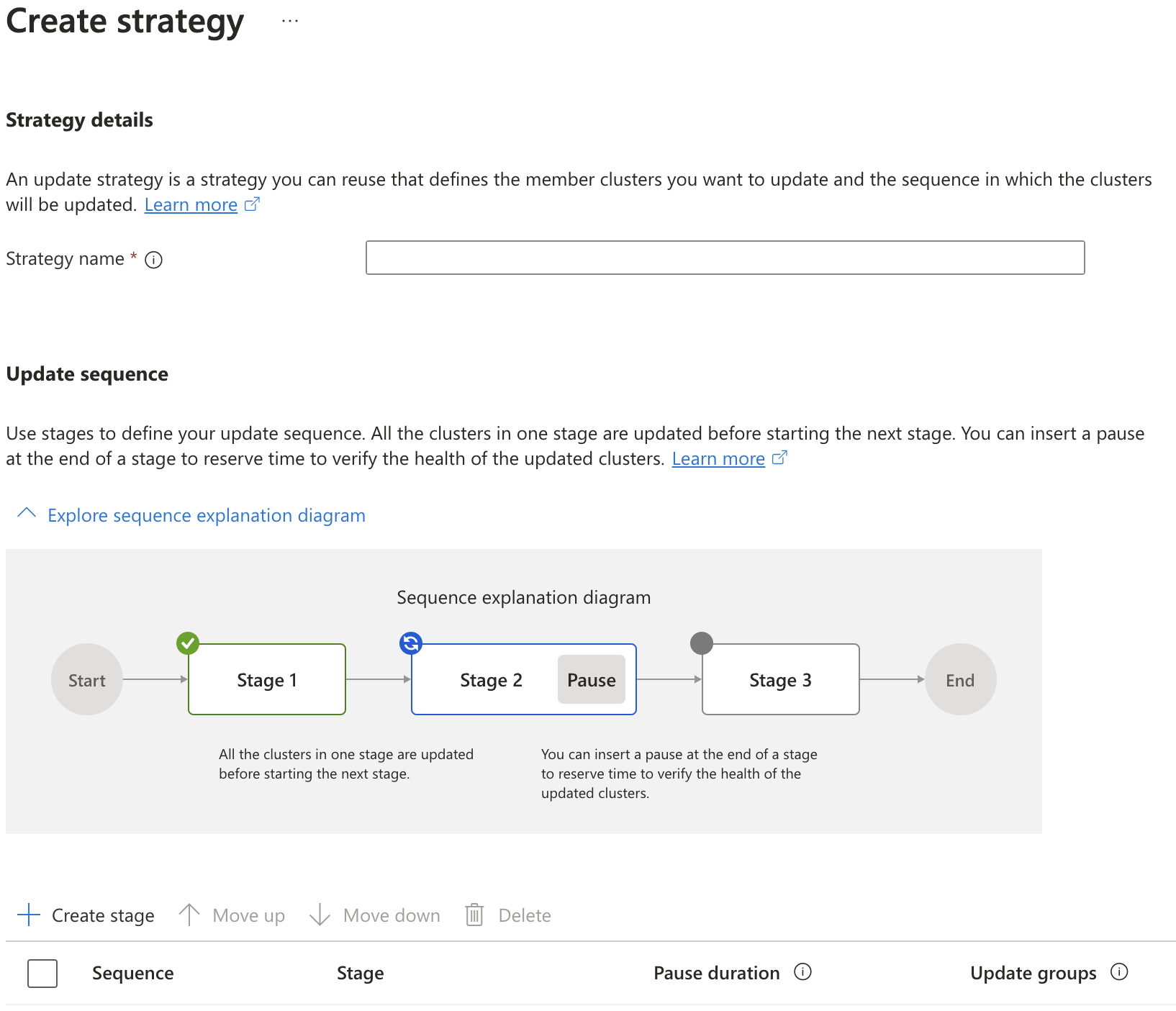Note
Access to this page requires authorization. You can try signing in or changing directories.
Access to this page requires authorization. You can try changing directories.
Administrators can control the sequence of updates to Fleet-managed clusters by defining a series of stages and groups. They can configure when approvals and pauses should occur within those stages and groups. The entire configuration can be saved as an update strategy which can be managed independently of update runs or auto-upgrades, allowing strategies to be reused as required.
This article covers how to define update strategies using groups and stages.
Prerequisites
Read the conceptual overview of Fleet updates, which provides an explanation of update runs, stages, groups, and strategies referenced in this guide.
You must have a Fleet resource with one or more member clusters. If not, follow the quickstart to create a Fleet resource and join Azure Kubernetes Service (AKS) clusters as members.
Set the following environment variables:
export GROUP=<resource-group> export FLEET=<fleet-name> export CLUSTERID=<aks-cluster-resource-id> export STRATEGY=<strategy-name>If you're following the Azure CLI instructions in this article, you need Azure CLI version 2.70.0 or later installed. To install or upgrade, see Install the Azure CLI.
You also need the
fleetAzure CLI extension version 1.6.0 or later, which you can install by running the following command:az extension add --name fleetRun the
az extension updatecommand to update to the latest version of the extension released:az extension update --name fleet
Assign clusters to update groups
Clusters can be used in update strategies once they are added to an update group which can be assigned to update stages. Within an update stage, updates are applied to each update group in parallel. Within an update group, member clusters update sequentially.
You can assign a member cluster to a specific update group in one of two ways:
- Assign to group when adding member cluster to the fleet.
- Assign an existing fleet member to an update group.
Note
A fleet member can only be a part of one update group, but an update group can have multiple fleet members assigned to it. An update group itself isn't a separate resource type. Update groups are only strings representing references from the fleet members. So, if all fleet members with references to a common update group are deleted, that specific update group ceases to exist as well.
Assign to group when adding member cluster to the fleet
In the Azure portal, navigate to your Azure Kubernetes Fleet Manager resource.
From the service menu, under Settings, select Member clusters > Add.
Select the cluster that you want to add, and then select Next: Review + add.
Enter the name of the update group that you want to assign the cluster to, and then select Add.
Assign an existing fleet member to an update group
In the Azure portal, navigate to your Azure Kubernetes Fleet Manager resource.
From the service menu, under Settings, select Member clusters.
Select the clusters that you want to assign to an update group, and then select Assign update group
Enter the name of the update group that you want to assign the cluster to, and then select Assign.
Create an update strategy
An update strategy consists of one or more stages, where a stage can contain one or more update groups.
In the Azure portal, navigate to your Azure Kubernetes Fleet Manager resource.
From the service menu, under Settings, select Multi-cluster update > Strategies, then Create.
Enter a name for the strategy.
The first time you view the page, an update strategy explanation diagram is displayed which can help visualize how strategies function.
Select Create Stage and enter:
- Stage name - name the stage - it must be unique across all stage names in the strategy.
- (Optional) Stage approvals - select this option if you would like to wait for an approval before this stage starts or after it completes. For more information, see Add approvals to update groups and stages.
- (Optional) Pause after stage - select this option if you would like to define a pause before moving to the next stage.
- (Optional) Pause duration - select a predefined duration, or enter a custom value in seconds.
Assign one or more Update Group to the stage, and then select Create.
Note
The maximum number of Update Groups in each Update Stage is 50.
Next steps
You can use an update strategy as part of a manual update run or an auto-upgrade profile. See:
